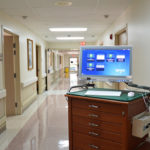
There’s no denying that healthcare is currently undergoing a major revolution. As more patients than ever have access to affordable health insurance, healthcare providers are faced with a new core challenge: how to reduce readmission rates at hospitals.
Readmission rates – the rate at which patients are unexpectedly readmitted to a hospital soon after a previous stay – is an important marker of the quality of care that a hospital provides. If readmission rates are too high, it indicates that patients aren’t receiving the quality care they need during their initial stay. With this in mind, many hospitals focus on reducing these rates by improving patient care.
One of the most surprising assets for reducing readmissions is technology. Telemedicine, advanced machinery, and even tablets and mobile nursing stations have made it possible to provide high-quality care to patients as soon as they walk through the door. Let’s examine a few of these unique technologies now:
- Mobile Device: Nursing stations benefit the most from mobile devices, as they’re specifically designed to help handle the heavy information load. mobile devices helps nurses navigate information from multiple departments, helping to promote communication between nurses and doctors from all departments. That means patients are quickly provided the care they need, while decreasing the risk for oversights and record errors.
- Telemedicine: VOIP calling and video conferencing software have made it possible for doctors to access specialists – all over a computer screen. Many hospitals don’t have access to specialists who may be able to identify and diagnose patients. This can influence patient readmission rates, particular if a patient is unable to get a successful diagnosis. By accessing this expertise without being tied to geographical location, doctors can offer better care while reducing readmission rates.
- Robotic Pharmacists: The future is here – and in the form of a robot pharmacist. Pharmacies play an integral part in reducing patient readmission rates by dispensing the correct medication in the correct dosage. Robotic pharmacists work at a faster and more accurate pace than humans, thus ensuing that all patients are served quickly and efficiently.
It’s no exaggeration to say that technology is truly shaping the future of healthcare. As more advances are made, patient care improves – and that means cutting down on readmission rates.
To learn more about the latest technologies helping to deliver better patient care, visit Onyx at http://www.onyxhealthcareusa.com/.














